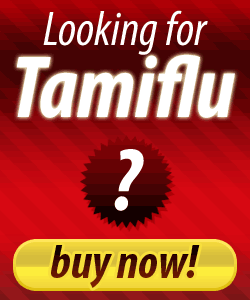Tamiflu has emerged as one of the preferred weapons in the battle against flu, both seasonal and the H1N1 virus, but it has at least one drawback -- it tends to be costly.
But a group of scientists claim to have developed an alternative method for producing the active ingredient in Tamiflu. The new process could expand availability of the drug by reducing its cost, which now retails for as about $8 per dose. Their study is in ACS' Organic Letters, a bi-weekly journal.
Anqi Chen, Christina Chai and colleagues note that the global pandemic of H1N1 has resulted in millions of infected cases worldwide and nearly 10,000 deaths to date. Tamiflu, also known as oseltamivir phosphate, remains the most widely used antiviral drug for the prevention and treatment of H1N1 infections as well as bird flu and seasonal influenzas.
But growing demand for the drug has put pressure on the supply of shikimic acid, the raw material now used in making the drug.
"As a result, chemists worldwide including ourselves have explored the possibility of using other alternative raw materials for the synthesis of the drug," said Chen and Chai, who led the research.
The scientists describe a new process for making the drug that does not use shikimic acid. They found that D-ribose, a naturally-occurring sugar produced by fermentation in large scales, potentially provides an inexpensive and abundant source of starting material for making the drug. D-ribose costs only about one-sixth as much as shikimic acid.
In lab studies, the scientists demonstrated the potential use of D-ribose as an alternative source for the synthesis of Tamiflu.
Tamilflu is not a vaccine against flu, but rather an antiviral, used to treat effects of the flu. Patients who take Tamiflu after, or just before getting the flu reportedly have less severe symptoms and recover more quickly.
However, critics say Tamiflu is not nearly as effective against flu symptoms as its manufacturers claim.
But a group of scientists claim to have developed an alternative method for producing the active ingredient in Tamiflu. The new process could expand availability of the drug by reducing its cost, which now retails for as about $8 per dose. Their study is in ACS' Organic Letters, a bi-weekly journal.
Anqi Chen, Christina Chai and colleagues note that the global pandemic of H1N1 has resulted in millions of infected cases worldwide and nearly 10,000 deaths to date. Tamiflu, also known as oseltamivir phosphate, remains the most widely used antiviral drug for the prevention and treatment of H1N1 infections as well as bird flu and seasonal influenzas.
But growing demand for the drug has put pressure on the supply of shikimic acid, the raw material now used in making the drug.
"As a result, chemists worldwide including ourselves have explored the possibility of using other alternative raw materials for the synthesis of the drug," said Chen and Chai, who led the research.
The scientists describe a new process for making the drug that does not use shikimic acid. They found that D-ribose, a naturally-occurring sugar produced by fermentation in large scales, potentially provides an inexpensive and abundant source of starting material for making the drug. D-ribose costs only about one-sixth as much as shikimic acid.
In lab studies, the scientists demonstrated the potential use of D-ribose as an alternative source for the synthesis of Tamiflu.
Tamilflu is not a vaccine against flu, but rather an antiviral, used to treat effects of the flu. Patients who take Tamiflu after, or just before getting the flu reportedly have less severe symptoms and recover more quickly.
However, critics say Tamiflu is not nearly as effective against flu symptoms as its manufacturers claim.




No comments:
Post a Comment
Note: Only a member of this blog may post a comment.